Stay on the Trail
 Most accidents happen when hikers leave the established trail and disregard warning signs. Staying on the trail greatly reduces your chances of having a serious fall or getting lost. Hawaiian forests are not like mainland forests—the growth is very dense, and it is easy to become disoriented. Thick overgrowth can mask dangerously steep drop-offs. Thin, sharp lava rock can crack
Most accidents happen when hikers leave the established trail and disregard warning signs. Staying on the trail greatly reduces your chances of having a serious fall or getting lost. Hawaiian forests are not like mainland forests—the growth is very dense, and it is easy to become disoriented. Thick overgrowth can mask dangerously steep drop-offs. Thin, sharp lava rock can crack
beneath your weight above deep holes or lava tubes.
Stay Together
 Hikers separated from their partners are more apt to make a wrong turn or lose the established trail. Keep track of each other, and regroup periodically, especially near junctions or when the trail gets obscure. Monitor everyone’s condition. Dehydration, sunstroke, hypothermia, and fatigue can hit even experienced hikers.
Hikers separated from their partners are more apt to make a wrong turn or lose the established trail. Keep track of each other, and regroup periodically, especially near junctions or when the trail gets obscure. Monitor everyone’s condition. Dehydration, sunstroke, hypothermia, and fatigue can hit even experienced hikers.
Avoid Undue Risks
 Climbing waterfalls and following narrow ridgelines or gulches off the trail can place you in danger. Rock climbing is extremely dangerous due to the crumbly and porous nature of the volcanic rock. There have been fatal accidents from crumbling rock…don’t take the chance.
Climbing waterfalls and following narrow ridgelines or gulches off the trail can place you in danger. Rock climbing is extremely dangerous due to the crumbly and porous nature of the volcanic rock. There have been fatal accidents from crumbling rock…don’t take the chance.
Monitor the Weather
 Keep an eye on the sky. When hiking into valleys or crossing streams, be mindful of rain conditions along the mountain top or ridges that can suddenly raise the water level in the stream. Use extreme caution if attempting to cross a swollen stream…rushing water is very powerful. It is better to find an alternative route, or wait until the water subsides. Check the Big Island Weather Online.
Keep an eye on the sky. When hiking into valleys or crossing streams, be mindful of rain conditions along the mountain top or ridges that can suddenly raise the water level in the stream. Use extreme caution if attempting to cross a swollen stream…rushing water is very powerful. It is better to find an alternative route, or wait until the water subsides. Check the Big Island Weather Online.
Assess Your Capabilities
 Compare your level of fitness, ability, and experience with the trail description. Be practical and realistic. There are a wide variety of trails in Hawai`i, so pick one that suits your level.
Compare your level of fitness, ability, and experience with the trail description. Be practical and realistic. There are a wide variety of trails in Hawai`i, so pick one that suits your level.
Stay Hydrated
 Carry at least 2 liters of water per person for a full-day hike; more if it’s a long hike or on a hot day. In tropical weather, dehydration can become a serious problem. Make sure you have the right hydration gear to carry enough water.
Carry at least 2 liters of water per person for a full-day hike; more if it’s a long hike or on a hot day. In tropical weather, dehydration can become a serious problem. Make sure you have the right hydration gear to carry enough water.
Wear Proper Clothing
 Dress in layers so you can protect your skin from the intense tropical sun. A hat, sunglasses and sunscreen are recommended. Hiking boots offer traction and ankle sup-port to prevent slipping and injuries on muddy trails and slick or sharp rocks. Light raingear or a soft outer shell are good to carry because of the quickly changing weather conditions
Dress in layers so you can protect your skin from the intense tropical sun. A hat, sunglasses and sunscreen are recommended. Hiking boots offer traction and ankle sup-port to prevent slipping and injuries on muddy trails and slick or sharp rocks. Light raingear or a soft outer shell are good to carry because of the quickly changing weather conditions
Be Safe - Plan Ahead
 If you have a cell phone, bring it along. Though reception is not available from all points on the islands, it is a good item to have in case of emergency. Carry a daypack or waistpack. You will need to keep your hands free and unencumbered while hiking. Pack a brightly colored article (to attract rescuer’s attention), a whistle (the sound travels farther and lasts longer than a voice), sunscreen, mosquito repellant, a small flashlight, food, and some basic first-aid (at least band-aids and antiseptic).
If you have a cell phone, bring it along. Though reception is not available from all points on the islands, it is a good item to have in case of emergency. Carry a daypack or waistpack. You will need to keep your hands free and unencumbered while hiking. Pack a brightly colored article (to attract rescuer’s attention), a whistle (the sound travels farther and lasts longer than a voice), sunscreen, mosquito repellant, a small flashlight, food, and some basic first-aid (at least band-aids and antiseptic).
Camping Require Permits
Camping spots of all kinds require inexpensive permits, which should be obtained well in advance of your trip. (For State parks, contact the Hawaii State Department of Land and Natural Resources at (808) 961-7200 and for thevolcano area, contact the Hawai’i Volcanoes National Park at (808)967-7321.)
Let’s go hiking! Check out our Big Island Hiking page with details on the best hiking in Hawaii. Also, check out our Volcanoes National Park section with lava flow photos and videos.
Looking to gear-up for your Hawaii trip? Check out the best prices on hiking shoes, clothing, and outdoors gear — free shipping!
Hiking Gear |
||
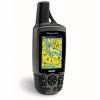 Portable GPS |
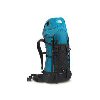 Backpacks |

Camelbak |
Big Island Hiking Activities
 Valley Waterfall Adventure
Valley Waterfall Adventure
The magic of the Hawaiian Islands will unfold before you as your Interpretative Naturalist Guide teaches you the history and ecology of this beautiful land. Imagine walking along a cliff-side trail 1,000 feet above the valley floor. Breathtaking views will stretch before you.
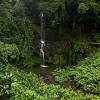 Pololu Valley Kohala Wai Adventure
Pololu Valley Kohala Wai Adventure
Explore the remote Pololu Valley area on the northern tip of the Big Island aboard a rugged off-road Pinzgauer 6×6 vehicle. Witness the life-giving and land-sculpting power of water, as you ramble through a changing landscape of rushing streams, towering ocean cliffs and cascading waterfalls. You’ll even have time to kick off your shoes and take a dip in a cool mountain pool!
 Waipio Valley Horseback Riding Tour
Waipio Valley Horseback Riding Tour
Take a horseback ride in a lush tropical paradise with jungle trails, taro patches, magnificent waterfalls and historical and spiritual sites! This 2 hour guided ride will take you deep into Waipio Valley, a wonderland of natural Hawaiian beauty. Enjoy responsive, well-trained, healthy horses. Your individual riding ability will be catered to.
Big Island Adventure Guides
 Hawaii Walks, Trails, Hikes
Hawaii Walks, Trails, Hikes
The most comprehensive hiking guide available to the spectacular island of Hawaii. This island has a wealth of areas to explore, including: Hawaii Volcanoes National Park, the island’s famous black sand beaches, shimmering blue bays, and remote rainforest valleys. Includes both day hikes and backpacks
 Hawaii Trailblazer
Hawaii Trailblazer
A guide for families and outdoor adventurers alike, the 2005 Trailblazer offers detailed descriptions of 142 hikes and strolls: the peaks of Mauna Kea and Mauna Loa, the shores of Waipio Valley and Kealakekua Bay, Hawaii Volcanoes National Park, rain forests and tropical gardens, waterfalls, petroglyph fields, and the Kona Coast. 71 snorkeling and swimming spots including remote hike-to specials; 39 surfing spots: boards, bodyboarding, and body surfing; 24 bike trails for adventure cyclists: mountain, coastal, forest, pasture; 25 campgrounds and rustic cabin hideaways.
 Hawaii: The Big Island Revealed
Hawaii: The Big Island Revealed
The Ultimate Guidebook by Andrew Doughty may properly be placed among the greatest guidebooks of Hawaii. Enhanced with 39 color maps, 132 color photos, and all the secrets necessary to fulfill the desires of any tourist. Andrew Doughty enlightens the reader on the every given shop, hotel, beach and cafe that only a Hawaii native might recognize for the exceptional decency or beauty of. Strongly recommended read for travelers planning a trip to Hawaii (or for those unsure where to go once the have arrived), Hawaii: The Big Island Revealed will help to make your destination Hawaii.




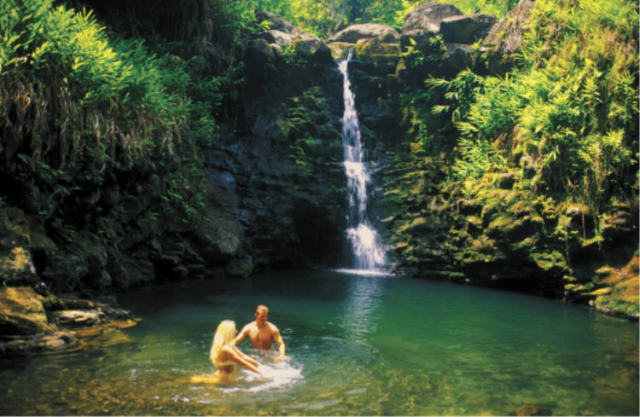 Hike
with an expert guide in Hawai'i Volcanoes National Park, in the rain
forests, deep in remote valleys, and explore hidden waterfalls
Hike
with an expert guide in Hawai'i Volcanoes National Park, in the rain
forests, deep in remote valleys, and explore hidden waterfalls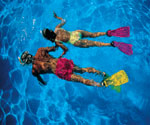
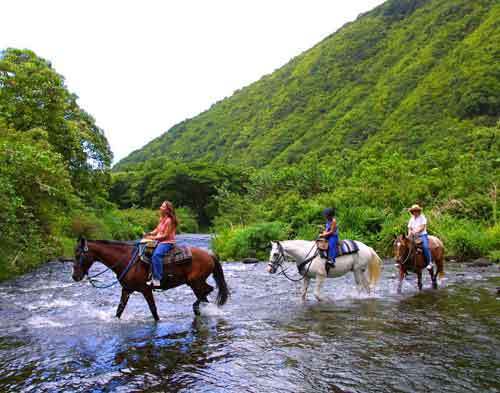 Enjoy
a picturesque Hawaiian horseback ride through the Valley of the
Kings, a lush tropical paradise of jungle trails, waterfalls, and spiritual sites.
Enjoy
a picturesque Hawaiian horseback ride through the Valley of the
Kings, a lush tropical paradise of jungle trails, waterfalls, and spiritual sites.

I am planning to go walk about in the northern parts of the big island, Waipio Valley areas in particular. It states in many publications one should get property owners permission to enter their land, how & where can this be obtained? Second question, there’s also reference to ‘no camping’ define ‘camping. as stated in any regulation(s), If my hiking trip extends into the evening/night, I plan on sleeping where it is safe. I am former military & have extensive training in multiple environments (my last walk about was in south Florida last year during Apl->July) I go prepared with proper safety & personal gear. I WILL NOT use open flame & what I pack in, I pack out! Any other suggestions? *PLEASE be respectful as to my email address.